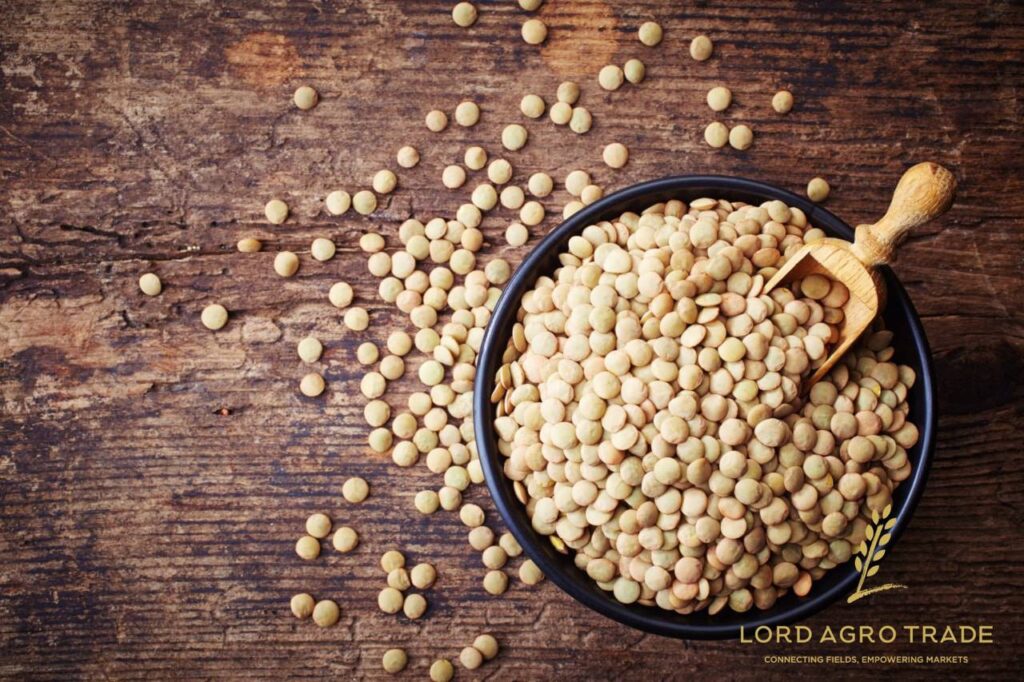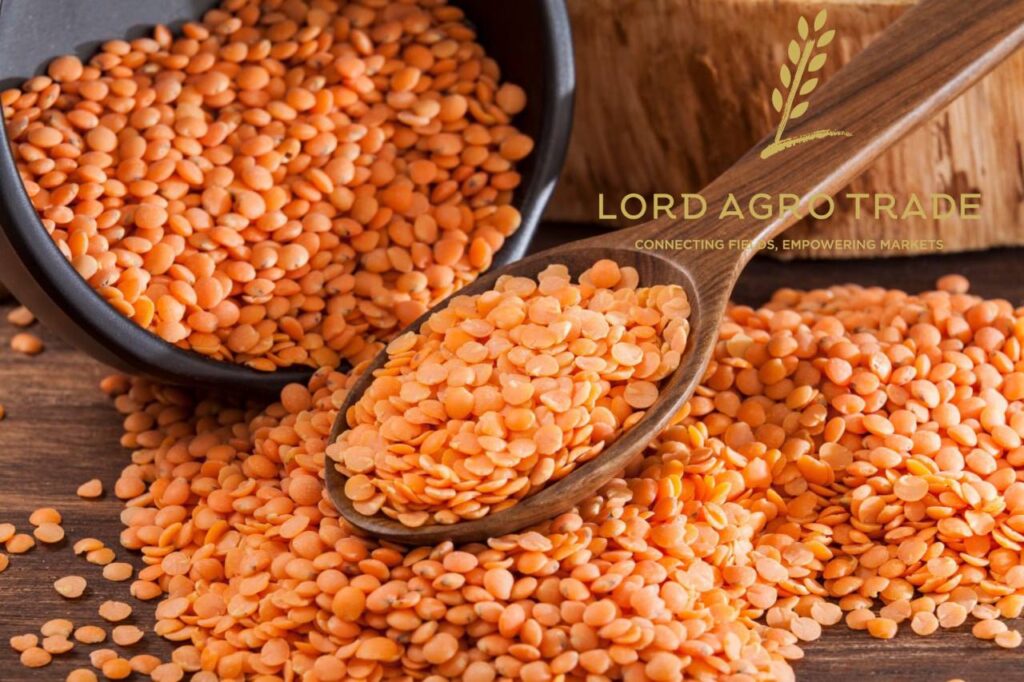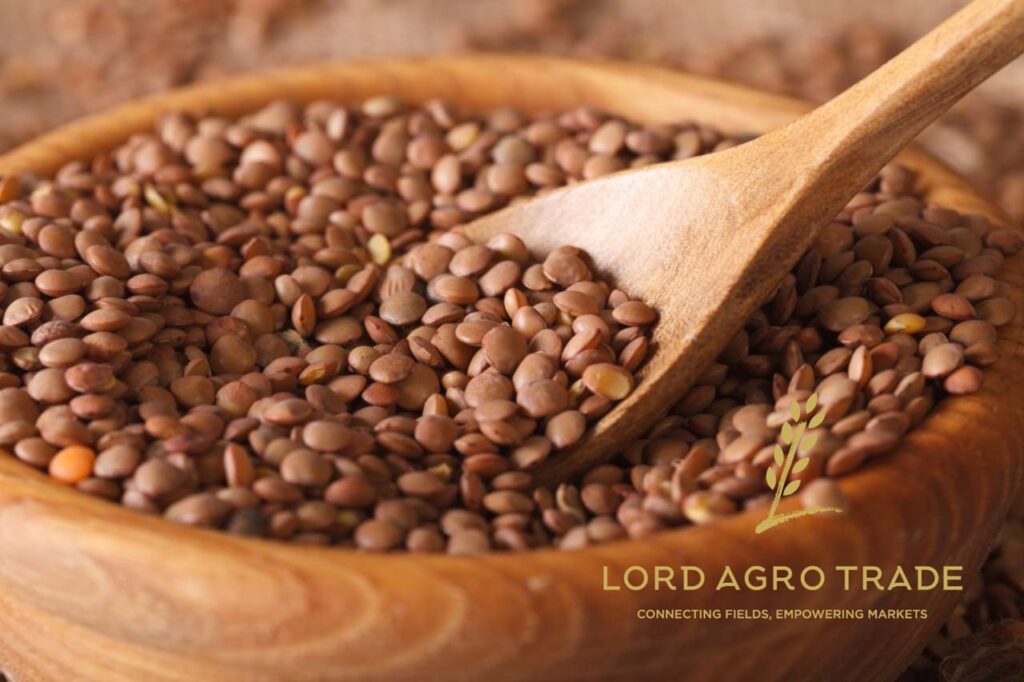Gulfood
17 To 21 FEB 2025 | DUBAI WORLD TRADE CENTRE
We’re excited to see you at Gulfood 2025!
Gulfood
17 To 21 FEB 2025 | DUBAI WORLD TRADE CENTRE
We’re excited to see you at Gulfood 2025!


Lentils are a bunch of invaluable beans. This is a legume commonly found in various cultures that has been used as a source of protein and fiber in cuisine. These tiny seeds not only bring a decent taste to the meal, but more importantly, they are vegan-friendly for their constituents of vitamins, minerals, and antioxidants.
In recent years, the pulses export business has seen rapid growth worldwide. Through the development of awareness about eating more plant-based diets and the need to have non-meat sources of protein, pulses have become a common choice for many people. This growth has brought about new avenues for lentil producers and exporters who want to launch their products in new and current markets.
Green pulses are clayey and have a slightly peppery flavor, which is why so many people around the world love them. Many culinary traditions have adopted them due to their great versatility. They come in a rich green color that ranges from light to dark green and is medium to large.
The firmness of green pulses’ irresistible taste after cooking is what makes them great for those dishes that need hearty and heavy ingredients. Green lentils, on the other hand, which are stiff yet tender when cooked, are the right choice for green salads, soups, stews, casseroles, and even as a base for veggie burgers and plant-based protein bowls.
Countries that have a huge knack for plant-based protein sources are the main distributors of green pulse. That is India, the US, Canada, and European countries such as France, Germany, and the UK.
These countries mostly import green lentils for direct consumption and as the ingredients for processed foods. Internationally, the current pulses trade composition is attracted to predominantly eco-friendly and plant-based diets. As a result, lentils have become a sought-after product from abroad for countries that specialize in pulses production.
read more: Market trend and exporting lentils in 2024

Red lentils are characterized by their distinctive orange-red color and unique, slightly sweet flavor. Another benefit of red pulses is their short cooking time, too. Red lentils, in comparison to other types of lentils that may require cooking for an extended period of time, are the ones that you can cook to be ready to eat in a very short time.
You can prepare red lentils as purees, soups, and light stews for quick meals, but they can also be the final product. They can be added to the main sauces to add creaminess to the dishes.
The top red lentil export markets include countries like India, Turkey, Egypt, and some parts of Europe and South America, where the people are very fond of this commodity. In many instances, red lentils, which are a staple food and consumed regularly, are part of these countries.
The appetite for red legumes is attributed to their nice taste, their simple cooking, and their high nutritional value. Foods that contain red lentils are very high in protein and fiber, and they are also a great substitute for meat because they are plant-based. Besides, their cheap prices and the ease of making them have turned them into the most favorite kitchen item for many families.
Suggested article : Why choose organic red lentils?

Brown lentils are the fastest-cooking ones and remain intact in curry or salad types of foods. These pulses are mild in flavor and come with a high nutritional profile. Hence, they are preferred by millions of people around the world.
Brown legumes are reddish-pink, green, and yellow but remain their natural color even after cooking. These qualities make them a very popular option, and you can make many variations of dishes using them.
Brown lentils have gained recognition as one of the most significant export goods in the world due to their versatility in different forms. The central countries that import brown legumes are India, Canada, Turkey, France, Germany, and other European countries.
In India, brown lentils are an integral part of traditional cuisine. On the other hand, brown legumes are mainly used in soups, stews, and healthy dishes in European countries.

Brown lentils are the fastest-cooking ones and remain intact in curry or salad types of foods. These legumes are mild in flavor and come with a high nutritional profile. Hence, they are preferred by millions of people around the world.
Brown legumes are reddish-pink, green, and yellow but remain their natural color even after cooking. These qualities make them a very popular option, and you can make many variations of dishes using them.
Brown legumes have gained recognition as one of the most significant export goods in the world due to their versatility in different forms.
The central countries that import brown legumes are India, Canada, Turkey, France, Germany, and other European countries. In India, brown lentils are an integral part of traditional cuisine. On the other hand, brown legumes are mainly used in soups, stews, and healthy dishes in European countries.

India now has a population of over 1.4 billion strong, which is why the need for more food sources, primarily for plant-based proteins, is increasing. Besides that, shifting dietary patterns and more vegetable-based and healthful food options have caused the consumption of pulses to rise in both traditional and modern cuisines.
The growing popularity of plant-based diets and the strengthening need for plant proteins also make the demand grow faster. More road and port projects, together with modern technologies, can ease the process of exporting and cut down the cost.
The competitive pricing and high quality of local products could lead to a decrease in imports. Moreover, the signing of trade agreements might be a way to lower tariffs and help exporters, whereas compliance with health and quality standards will be a key point in the success of Asian markets. In the main, if exporters can deal with the difficulties and the possibilities, the future of lentil exports to India and Asia can be regarded as good.
Dear Sir/Madam,
My name is Shintaro, from Witnestic in Japan.
We are an importer and seller of organic/healthy food products, mainly through online platforms such as Amazon Japan.
We are interested in purchasing black lentils from your company. We’d like to start with approximately 100 kg to test the market, and if it goes well, we plan to place larger
orders on a regular basis.
Does your company have a product of black beluga lentils?
If you have any questions or need more details about our company, please let me know. We look forward to your response and hope to establish a long-term business
relationship with you.
Sincerely,
Shintaro Sato
Hello dear friend, I would like you to contact us via WhatsApp so that we can respond to your request regarding the supply of Canadian lentils you need